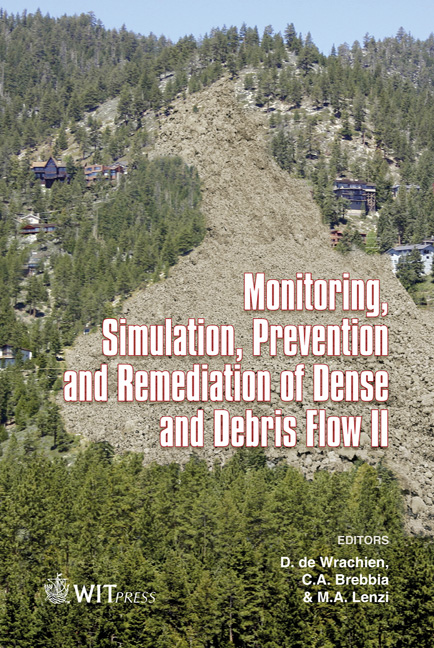Comparison Between FLO-2D And RAMMS In Debris-flow Modelling: A Case Study In The Dolomites
Price
Free (open access)
Transaction
Volume
60
Pages
10
Page Range
197 - 206
Published
2008
Size
3,320 kb
Paper DOI
10.2495/DEB080201
Copyright
WIT Press
Author(s)
M. Cesca & V. D’Agostino
Abstract
This paper presents a comparison of the results obtained through the use of two numerical models for debris flow simulation. FLO-2D and RAMMS were used to carry out a back analysis of a well-documented debris-flow event, which occurred on 5th July 2006 in the Dolomites (Fiames locality, Belluno, Italy). The performances of FLO-2D and RAMMS are tested in terms of adaptation degree to the observed field data. Keywords: debris flow, numerical modelling, FLO-2D, RAMMS, Dolomites. 1 Introduction Debris flows are common in mountainous areas and present a severe hazard due to their high mobility and impact energy. In addition to causing significant morphological changes along rivers and mountain slopes, these flows are frequently reported to have brought about extensive property damage and loss of life. Therefore, accurate prediction of runout distances and velocities can reduce these losses by providing a means to delineate hazard areas, to estimate hazard intensity for input into risk studies and to provide parameters for the design of protective measures. Application of computational debris-flow models to real case studies necessitates many assumptions about the details of the event and the pre-event topography. Debris flow routing models are necessary for engineering practice and some models have been in regular use for a number of years, e.g., for producing hazard maps or for evaluating the effectiveness of mitigation
Keywords
debris flow, numerical modelling, FLO-2D, RAMMS, Dolomites.





